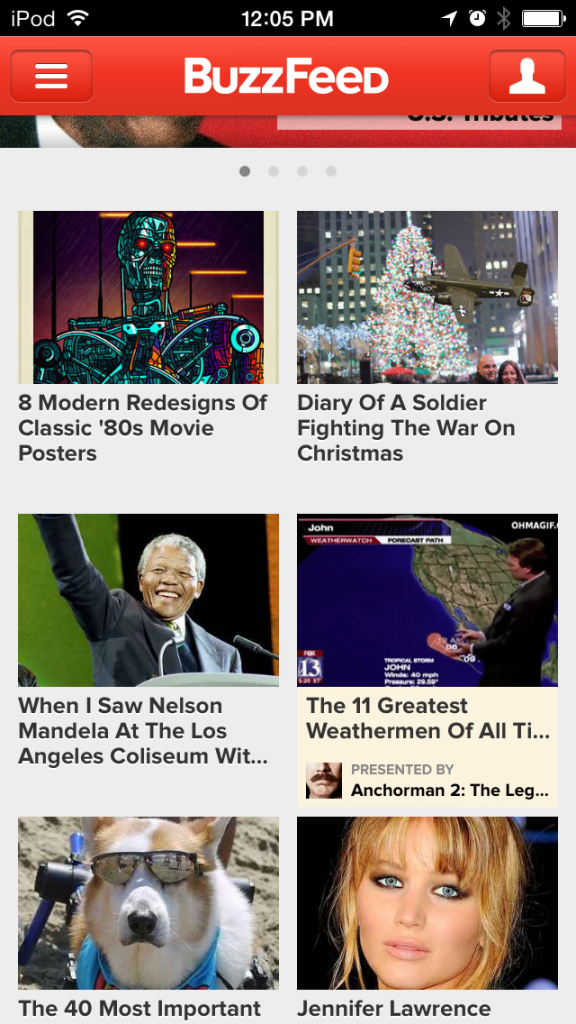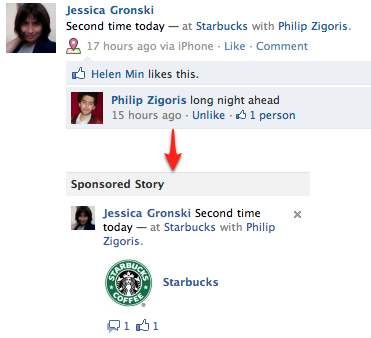Native Advertising: Business Types That Should Consider Going Native

As one of the hottest buzzwords of 2013, native advertising appears to be here to stay as a staple of digital advertising. We’re going to cover just about everything you need to know to get familiar and started with native advertising. Check out the rest of the series here:
Native advertising is advertising that delivers relevant content in a familiar context for the user. For a more thorough look at what native advertising is, see here.
The more consistent your marketing is with the publishing website’s design, feel, and demographics, the more your marketing can succeed. Native ads are all about relevancy: delivering a resonating message to the right audience in a trusted channel.
But native advertising isn’t for everyone. Only specific business types can actually take advantage of the quickly growing marketing channel. Let’s take a closer look.
Native advertising is new and relatively untested. Currently you only see nationally-recognized brands buying native ad space on big name blogs, but that doesn’t mean that the marketing channel is restricted to enterprise-level businesses. Here are a few rough criteria that outline which businesses can get the most out of native advertising campaigns:
 Native advertising is great for mobile conversions because of the format’s ability to fit with any type of website. BUT, this means that the business should have a significant percentage of overall traffic that’s from mobile devices in order to even consider any type of mobile advertising. Significant, in this case, means 25% of overall traffic or higher.
Native advertising is great for mobile conversions because of the format’s ability to fit with any type of website. BUT, this means that the business should have a significant percentage of overall traffic that’s from mobile devices in order to even consider any type of mobile advertising. Significant, in this case, means 25% of overall traffic or higher.
- Instead of tiny mobile ads that users ignore, native ads blend into the mobile site experience, like you see here on Buzzfeed’s app (“Presented By Anchorman 2”).
- Native ads work across multiple platforms, meaning that you do not need a separate mobile and desktop ad strategy.
To put things broadly, native advertising can help unify marketing across smartphones, tablets, netbooks, laptops, and desktop computers.
You cant have an effective content marketing strategy without, most importantly, a dedicated team of content writers and a well-established inbound marketing strategy. By inbound I mean you have a system in place for collecting leads (contact info) and pushing those leads farther down your funnel either via email marketing, phone calls, etc.
With that said, let’s say you sell boating equipment. You’ve established a relationship with a native ad publisher like Business Insider and now you have to come up with the content. Your writers push out an “11 Ways to Host the Best Boat Party Ever.” This post not only has to be relevant to the small niche of Business Insider readers that like boating, but they have to be pushed towards some call to action, whether it’s signing up for an email newsletter with more fun boating tips or signing up for a 10% discount on their purchase from your site.
Either way, you want to increase brand awareness with your content AND have a system in place for encouraging future touch-points with the reader.
As fluffy as it sounds, native ads are more effective than traditional display advertising at adding an “emotion factor” to an eventual purchase decision from your brand.
Take the partnership between BuzzFeed and Target. BuzzFeed has a number of articles on things like 11 Perfect Couples Costumes and 13 Pets Too Adorable to Be Scary. Hell, there’s even an entire section of posts devoted to Target Pets advertising.
In this section, Target can promote their pet costumes for Halloween as BuzzFeed drives massive traffic to the cute pictures of Man’s best friend. The content and the advertised copy work in perfect tandem with each other.
Animal lovers have more emotional attachment to the content, so over time native can really help bring your brand closer to consumers AND present a more compelling to opt-in to your content (ie. sign up for newsletter, sign up for promotion, etc.).
Since 2000, overall banner click through rates have decreased from 9% in 2000 to .2% in 2012. With such a low click through rate, the efficiency of marketing services and products online drops dramatically.
This is why native advertising was viewed 53% more frequently than display ads. People pay attention to advertising that focuses on their interests and why a visitor came to the site originally.
Another reason why native advertising has taken off over the course of the past year is the adoption of native ads by large social networks like Twitter, Facebook, YouTube, and StumbleUpon (in addition to huge blog syndicates).
 Right after the Facebook IPO last year, many businesses were grumbling about problems with Facebook ads. Then Facebook came up with Sponsored Stories, which has revived the company’s revenue model. As they started to learn the right mix of sponsored stories with newsfeed items, click through rates increased dramatically. In fact, Facebook increased their click through rate over 49 times over their previous advertising model at 53% of the cost to advertisers.
Right after the Facebook IPO last year, many businesses were grumbling about problems with Facebook ads. Then Facebook came up with Sponsored Stories, which has revived the company’s revenue model. As they started to learn the right mix of sponsored stories with newsfeed items, click through rates increased dramatically. In fact, Facebook increased their click through rate over 49 times over their previous advertising model at 53% of the cost to advertisers.
It was no surprise then, when Twitter, who has had a limited Promoted Tweets program since 2010, expanded the program dramatically this year to include a wider range of advertisers.
YouTube and StumbleUpon joined in the game with their own native advertising model. It is even rumored that Google+ introduce native ads soon.
Stay tuned for more articles in our native advertising series, including:
